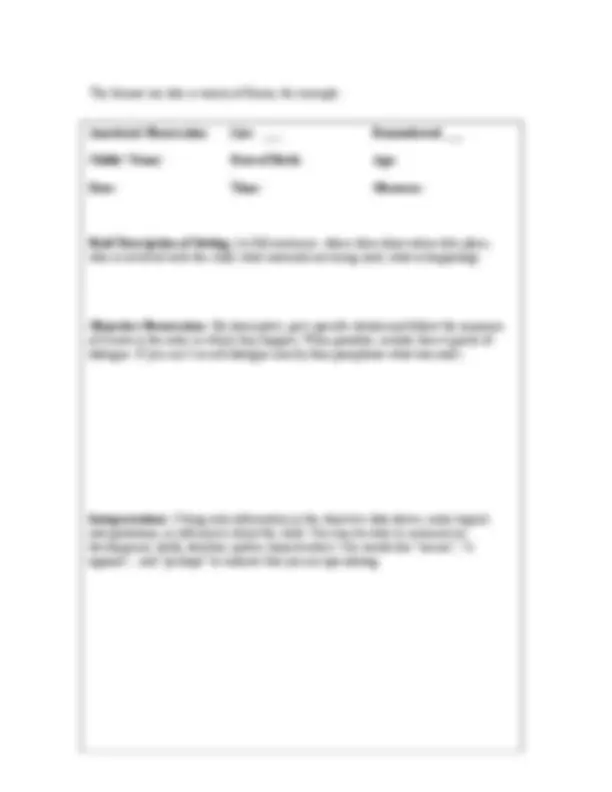



Study with the several resources on Docsity

Earn points by helping other students or get them with a premium plan


Prepare for your exams
Study with the several resources on Docsity

Earn points to download
Earn points by helping other students or get them with a premium plan
Community
Ask the community for help and clear up your study doubts
Discover the best universities in your country according to Docsity users
Free resources
Download our free guides on studying techniques, anxiety management strategies, and thesis advice from Docsity tutors
Observing young children: A guide for early childhood educators in. Canada. ... The anecdotal record is used to document spontaneous behaviours by children.
Typology: Study notes
1 / 2

This page cannot be seen from the preview
Don't miss anything!


Based on: Wylie, S. (1999). Observing young children: A guide for early childhood educators in Canada. Scarborough, ON: Nelson Thomson Learning. Pp. 88 – 95. The anecdotal record is used to document spontaneous behaviours by children. The name comes from the fact that the result is a recorded story or “anecdote”. This is an open- ended method, which means that educators record whatever events unfold, including as much detail as possible, rather than looking for specific behaviours and only recording those. Typically, the observer jots down notes quickly and then transcribes the notes into the objective data as soon as possible. When these notes are made as the situation occurs, it is referred to as a “live anecdote” and the data should be written in the present tense. When the notes are made after the fact it is referred to as a “remembered anecdote” and the past tense should be used for writing the anecdote. A series of anecdotes in a variety of settings allows educators to track children’s development, make decisions about curriculum and plan for the future. These observations may also be shared with parents and other professionals. Clarity and objectivity in the data are very important. To reduce the potential of judgment errors it helps to be aware of one’s own biases. Following the recording of the observation the educator will make an interpretation. These should be based on one’s knowledge of development and typical child behaviour. They are essentially a “best guess” about the meaning of the observation. The interpretation should relate directly to the data recorded in the observation and not to other details that were observed but not recorded. Advantages of Anecdotal Records
The format can take a variety of forms, for example: Anecdotal Observation Live ___ Remembered ___ Childs’ Name: Date of Birth: Age: Date: Time: Observer: Brief Description of Setting : (in full sentences: where does observation take place, who is involved with the child, what materials are being used, what is happening) Objective Observation : (Be descriptive; give specific details and follow the sequence of events in the order in which they happen. When possible, include direct quotes of dialogue. If you can’t record dialogue exactly then paraphrase what was said.) Interpretations : (Using only information in the objective data above, make logical interpretations, or inferences, about the child. You may be able to comment on development, skills, abilities, and/or characteristics. Use words like “seems”, “it appears”, and “perhaps” to indicate that you are speculating.